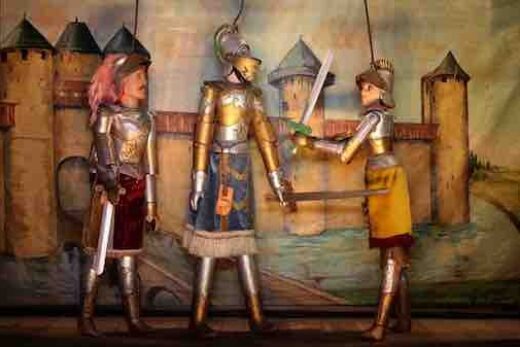
Typed or electronic text with handwritten annotations
15 pages
Chevaleresse
In his play Chevaleresse (The Female Knight), Anthony Ficarrotta challenges the almost exclusively masculine identity of knights on the Liège puppet scene. Playing with the codes of the traditional chivalry plays, he intends to tackle the modern question of gender equality. In 2023, the playwright decided to modify his text in order to further emphasize its sisterly dimension. Now, Nanesse comes to Clara’s aid, not Tchantchès.
A woman wins a battle against men
The Duke has summoned an assembly in order to decide who will be his representative at the tournament organized by the Duke of Bato. Clara, his daughter, hopes that she will be chosen, but the Duke chooses Seigneur Hubert and then Seigneur Herbert instead. They both refuse. The Duke sends Clara and Tchantchès to fetch Robert, the last knight. Robert, utterly crazy, cannot represent the Duke at the tournament. Clara decides that she will participate in the tournament by pretending to be Robert. At this moment, Clara and Tchantchès are attacked by highwaymen but they manage to push them away. The leader of the highwaymen falls in love with Clara.
Clara, dressed as a knight, and Tchantchès go to the palace of the Duke of Bato. The tournament starts with a fight between Clara and a knight who is taller than her. The knight discovers that he is fighting against a woman. The Duke of Bato is furious; he sees Clara’s participation as an insult and he wants revenge. Clara and Tchantchès find the leader of the highwaymen. He joins them, and they fight the Duke of Bato’s army and win the battle. Clara’s father, who arrives too late, finally understands that “a woman is worth just as much, if not more, than a man”. He evenetually accepts that his daughter becomes a knight. Tchantchès advises the leader of the highwaymen to join the Duke’s army in order to see Clara more often.
First performance
Museum of Walloon Life puppet theatre